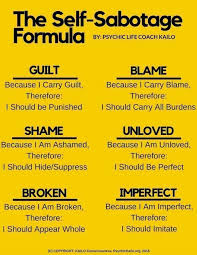Recovering from anything that is traumatic will come with its challenges. Most of us just need help with accessing the resources that can address the challenges and aid time in healing your wounds. Here are a few things that can be used to tailor your toolbox for the construction of your healing.
Before getting to the list it is important to understand what trauma is. Many of us believe we have not endured any trauma, but trauma is not limited to abuse, neglect, war, or violence. It can also come from feeling unseen or unvalued as a child, moving/relocating, job loss, family changes, having boundaries violated, and more. Whatever your source, here are some things that may be an asset in concocting your self-healing remedy.
1. Acceptance – acceptance does not mean that what happened was ok. It means that you no longer have to fight to suppress it. Now, you can look at it for what it is, and decide the appropriate way to handle it.
2. Resilience – this is your ability to be bent, but not broken; to be used, but not damaged. This is knowing that you are of a spirit that was built for the challenges it endures. Remember that you are able to bring self-healing and be as useful and necessary as you were created to be. How you are able to adjust to the circumstance and regain control is your resilience and wherever you are on that scale, it can be built upon.
3. Support – I have a saying; “a dollar is better than four quarters”. I use this in terms of support. It’s better to have one solid person of PERSONAL support than to have four who aren’t actually there for you. Just this one person can be a great start and it helps to have a sounding board for releasing the thoughts that are tumbling around inside. Validation received from supports also builds resiliency in knowing that you are heard and seen and that your responses to stress are normal.
The other type of support is PROFESSIONAL supports; where you’d go for the safe processing of thoughts and emotions. Here, you can take the heavier things you do not want to consistently place on those that you need around on the day to day basis. Finding the right counselor or life-coach could make a major difference in your journey.
4. Routine for self-care – not only is establishing a routine healthy but making sure that routine includes self-care is essential. Self-care is the fuel that will get you to where you are going. It is the massage for tired feet so we can walk another day; the positive affirmation to boost the spirit; the exercises for the strength and endurance; the good nights’ rest for clarity; the healthy eating for proper nutrients and growth. All of these things reduce illness or DIS-EASE. When you are not at ease, you are not able to make the healthy decisions that promote healing.
In addition to self-care is learning and practicing techniques for triggering situations. Some techniques include deep breathing, grounding, or utilizing distractions such as calling supports or counting backward. Just as we have fire drills at work and school, so must we with life. We do not want to wait until the fire hits to decide our options. Begin trying some techniques even when you are not in a heightened state. Know what you respond to and how it feels so that you know what techniques to activate and when.
5. Goal – having small goals after trauma re-instills power, purpose and control. This is about establishing and accomplishing something for self and celebrating every step closer to its achievement. Additionally, you are now operating from a future-oriented stance, removing you from that toxic mental space.
6. Belief – This is most important of all, but is shaped more strongly by the incorporation of all of the above. Initially, the belief only has to be strong enough to get you to start, but knowing your future is not determined by the roads you’ve already traveled will promote moving forward. Whether you believe you can or believe you can’t, you are right; you may as well believe you can!
In healing, you want to understand the realities of trauma. There is no getting around the normal reactions to abnormal situations. They are in place for a reason. Appreciate that your system works, but find the remedy it needs to be repaired. That is what is so special about us. That remedy is truly of your own making. You get to add or subtract at will; be that your decisions, your friends, even family. You can formulate what you need and how you need it but that will only come through consistent assessment, action, trial, and belief. So, even if just a mustard seed part of you that knows that ‘Ye are Gods’, you know you cannot fail!
If you would like to attend the Heal and Chill retreat and participate in my Workshop: Roadmap to Loving Your Selfie, follow me at Jess Mahogany, and The Spice Rack, on IG to apply and for weekly insights into mental health, healing, living the dream, and powering up!
Remember – Bent, not Broken. And if you need a sidekick to the hero within, I got you – SUBSCRIBE!



